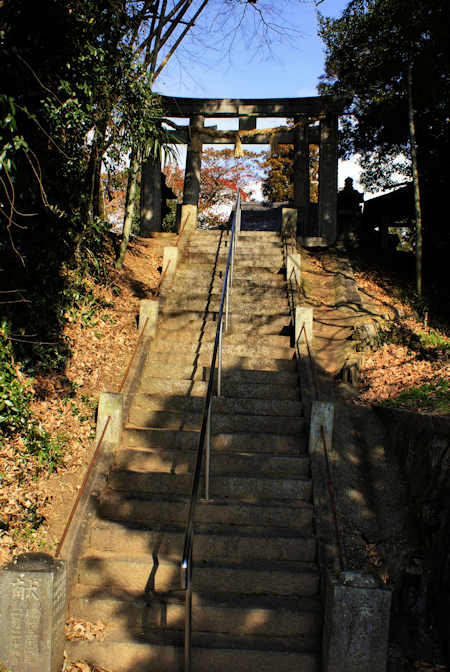Japan Shrines
About one kilometer from the previous shrine,
Otoguma Tenmangu, the village shrine in Yokoguma was similar in appearance, being situated within a grove of large trees. However, by crossing a small river to get here I had entered into a different cultural sphere. Whereas almost all the shrines I had visited earlier were Tenmangu shrines, on this side of the river they turned out to be shrines all connected to the mythical Empress Jingu.
According to the story, Emperor Chuai, considered the last of the "emperors" of the Yayoi period, and who was based here in northern Kyushu rather than the Yamato area, received an omen from the kami Takamimusubi who took the outward form of a bird that alighted on a pine tree before flying off to the north.
Takamimusubi is one of the first group of kami who "came into existence" and who has no stories about him in the ancient myths but is considered in some versions to be a grandfather of Ninigi who later descended from the high plain of heaven to begin the rule over Japan.
After Chuai's death, his consort, later known as Empress Jingu came back to this spot and established the shrine with Takamimusubi as the kami.
Hayabusa, in the name of the shrine, refers to the peregrine falcon, believed to be the bird of the legend. Though the original pine tree has long since gone, a group of three centuries old trees are revered here,
My next stop was the nearby
Frog Temple, Nyoirinji, and several of the shrines i visited later were also connected to Jingu.
Japan Shop







































































